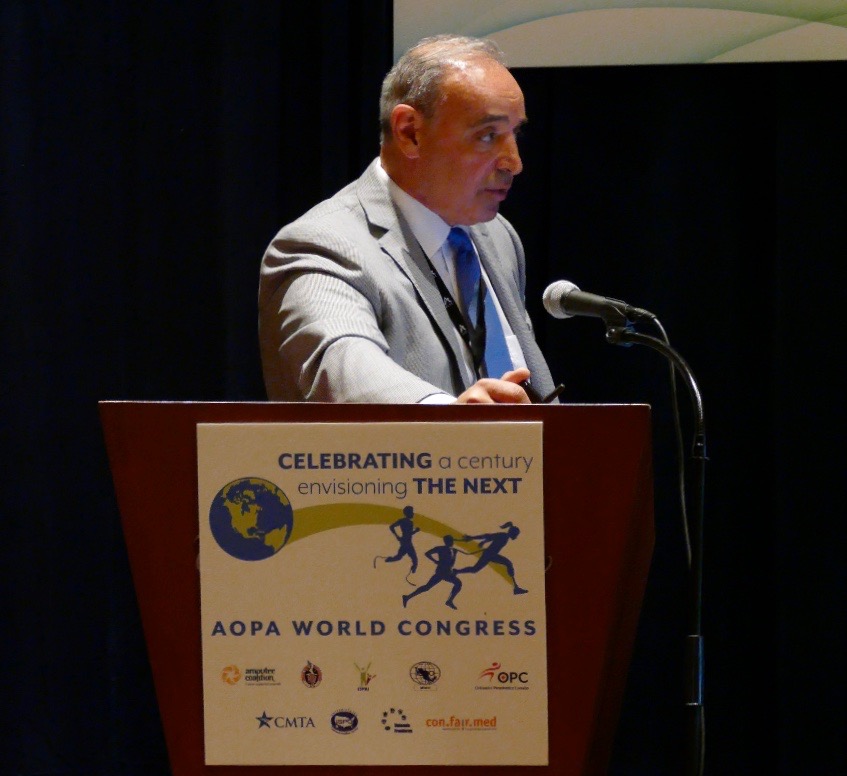 Dr. Moramarco spoke at the AOPA (American Orthotist and Prosthetic Association) World Congress in Las Vegas. His topic: Is Idiopathic Scoliosis ≥40° Amenable to Bracing at the Later Stages of Skeletal Maturity? The 28 patients in the cohort had been braced by either Dr. Marc or his colleague Ken Mandler, L/CO of Shriners Hospital in Honolulu (now a professor of O & P in Spokane, Washington). The 24 female patients in the cohort were all post-menarchal, some by nearly two years. The range of Cobb angles in the cohort was 40º to 64º.
Dr. Moramarco spoke at the AOPA (American Orthotist and Prosthetic Association) World Congress in Las Vegas. His topic: Is Idiopathic Scoliosis ≥40° Amenable to Bracing at the Later Stages of Skeletal Maturity? The 28 patients in the cohort had been braced by either Dr. Marc or his colleague Ken Mandler, L/CO of Shriners Hospital in Honolulu (now a professor of O & P in Spokane, Washington). The 24 female patients in the cohort were all post-menarchal, some by nearly two years. The range of Cobb angles in the cohort was 40º to 64º.
Unfortunately, families of kids with scoliosis at Risser 4 with a Cobb angle ≥40º are often told that surgery is inevitable and scoliosis is likely to progress. This means these patients are often left with nowhere to turn. Dr. Moramarco continues to push the envelope in conservative scoliosis treatment offering options to patients who are offered few. Historically, these patients haven’t been studied by the medical establishment because patients in this group are usually always recommended for surgery and fall outside of the SRS criteria for bracing studies (1):
- 10 years or older when a brace is prescribed
- Risser 0-2
- primary curve angles of 25º – 40º
- no prior treatment
- if female, either pre-menarchal or less than 1 year post-menarchal
As we have seen clinically, it is often common practice that patients in the 40º+ range and beyond Risser 2 or 3 are not always offered bracing, and sometimes offered only surgery as their option for treating scoliosis. Perhaps this is because of the dated bracing options that are still used in many parts of the US. On the other hand, 3D asymmetric brace design is an advancement in scoliosis bracing technology that can address the sagittal plane regardless of Cobb angle, and attempts the best possible in-brace corrections.
Offering braces for Risser 4 patients is uncommon in traditional medical circles. Although growth at Risser 4 is nearly complete, and certainly on the downswing, some patients experience what is known as “residual growth.” This offers the opportunity to wear a brace to try to halt progression and/or prevent surgery. Several factors play a role in the outcome, especially spinal flexibility.
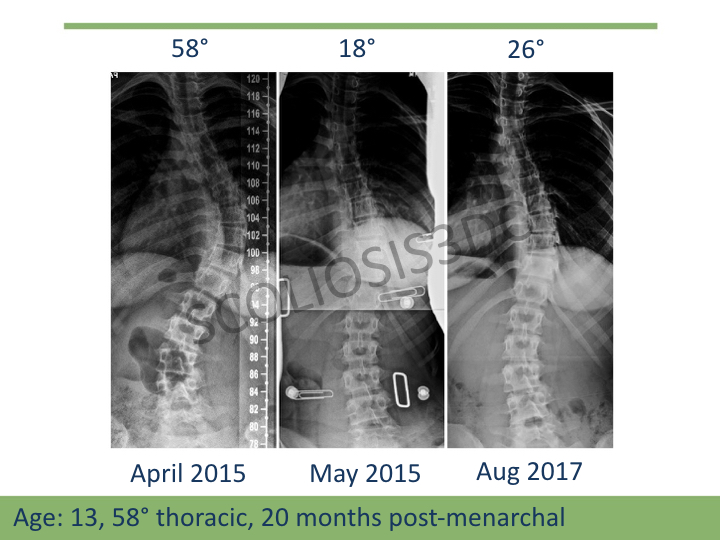
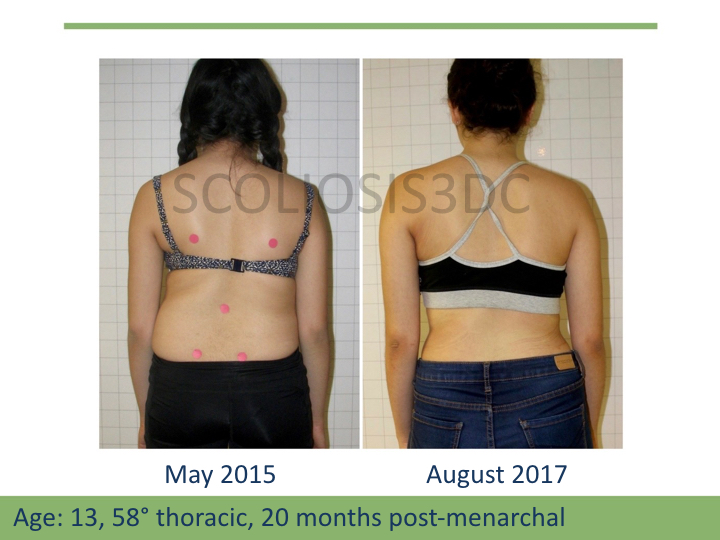
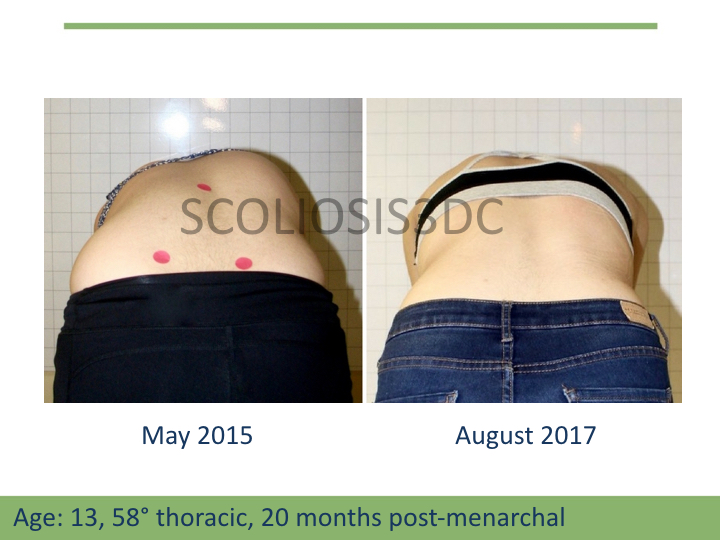
Furthermore, a study from 2012 challenges the long-held premise that there is no opportunity for improvement at Risser 4 (2). There is now some evidence to suggest that lasting radiological and postural improvements can be made (3 &4). This is true, even in skeletally mature scoliosis patients, often due to spinal flexibility.
For patients between Risser 4 and Risser 5, the right brace can work to take advantage of residual growth at a time when patients in other braces are recommended for weaning. The results presented from this cohort demonstrate that the bracing can make a real difference for this set of patients, many of whom have never been offered an alternative for scoliosis treatment.
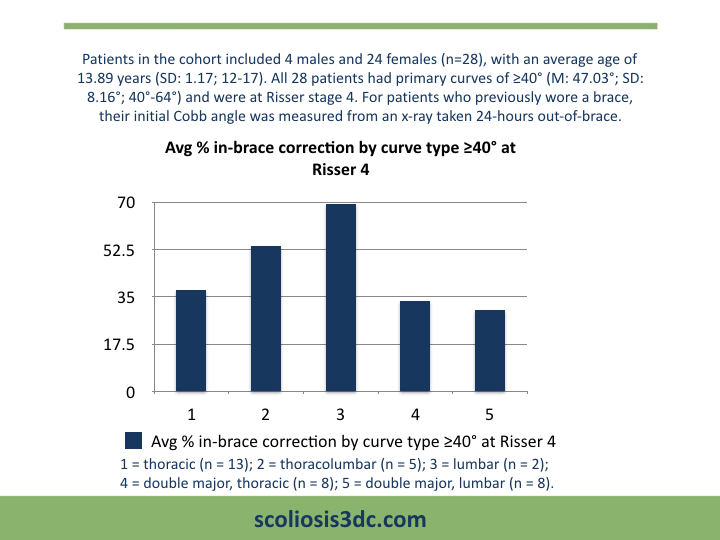
(1)Richards BS, Bernstein RM, D’Amato CR, Thompson GH. Standardization of criteria for adolescent idiopathic scoliosis brace studies: SRS Committee on Bracing and Nonoperative Management. Spine. 2005;30:2068–75.
(2) Hacquebord JH, Leopold SS. In brief: the Risser classification: a classic tool for the clinician treating adolescent idiopathic scoliosis. Clin Orthop Relat Res. 2012; 470(8):2335–8.
(3)Negrini S, et al. Efficacy of bracing immediately after the end of growth: final results of a retrospective case series. Scoliosis. 2009; 4(Suppl 2): O49.
(4)Weiss HR, et al. Scoliosis bracing and exercise for pain management in adults—a case report. Journal of Physical Therapy Science. 2016;28(8):2404-2407.

